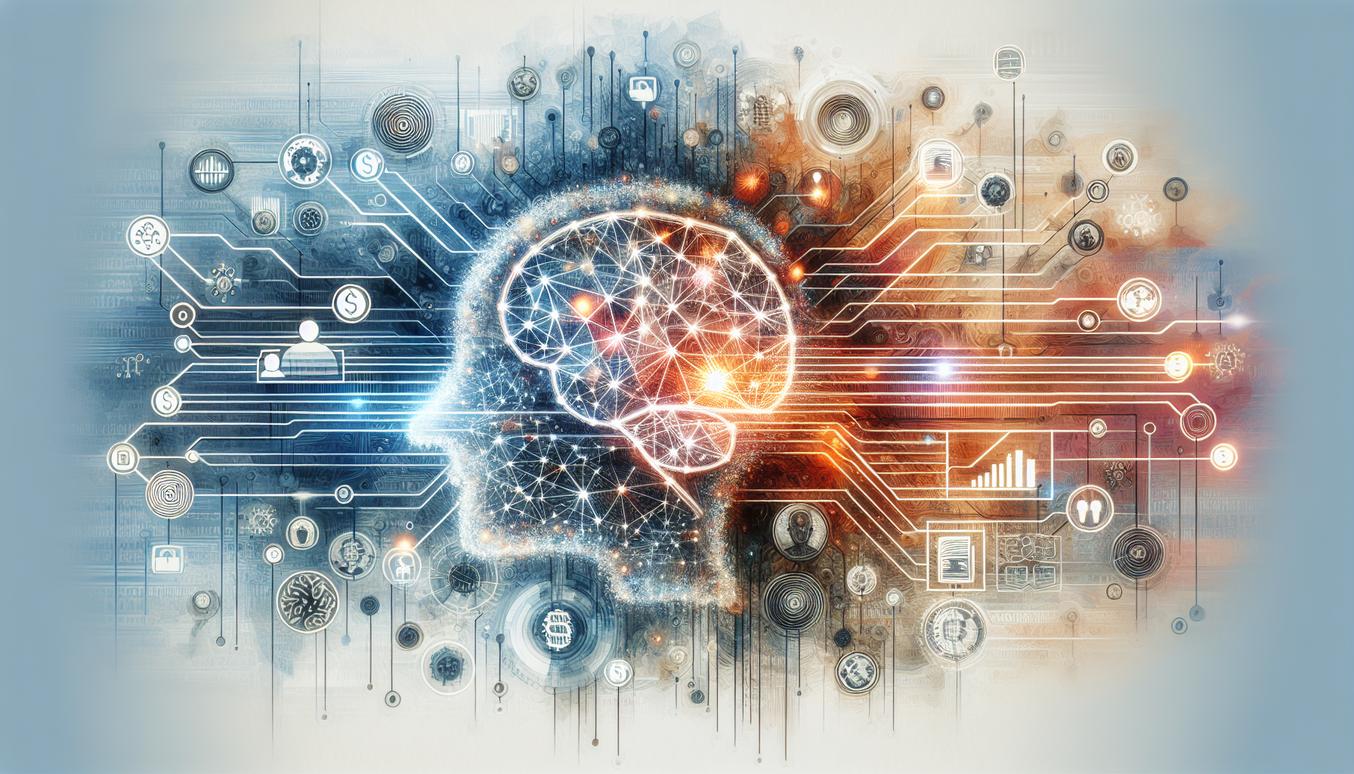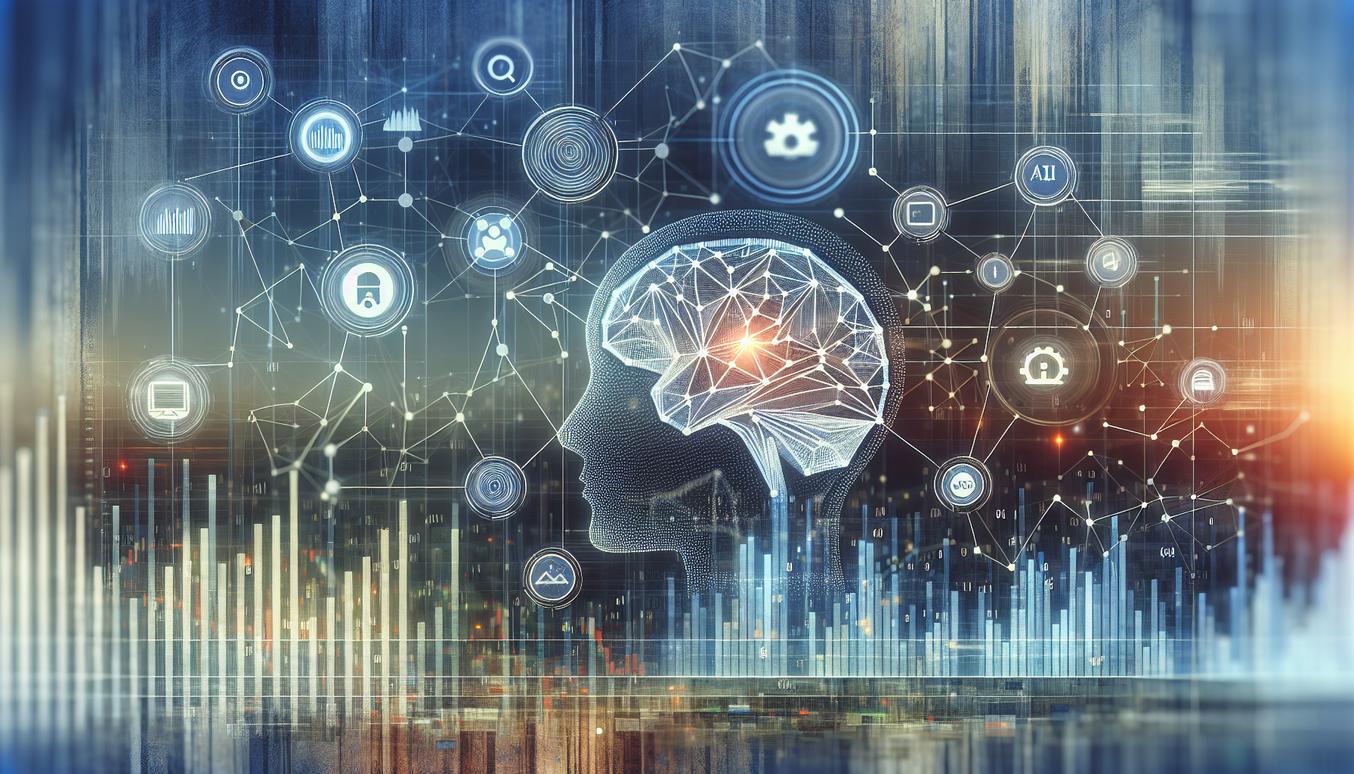Table of Contents
- Executive Overview: What Neural Networks Achieve
- Conceptual Building Blocks: Neurons, Activation, and Layers
- How Learning Works: Loss Functions, Optimization, and Backpropagation
- Architectures in Practice: Feedforward, Convolutional, Recurrent, and Transformers
- Design Considerations: Capacity, Regularization, and Data Needs
- Training Recipes for 2025 and Beyond
- Evaluation and Interpretability: Metrics, Saliency, and Debugging
- Ethics, Robustness, and Responsible Deployment
- Hands-on Sketch: Pseudocode and Small Experiments
- Further Reading and Curated Resources
- Appendix: Mathematical Notation and Quick References
Executive Overview: What Neural Networks Achieve
At their core, Artificial Neural Networks are a powerful class of machine learning models inspired by the structure of the human brain. Imagine a vast team of interconnected specialists, each with a very narrow area of expertise. Individually, their contribution is small, but collectively, they can learn to recognize complex patterns, make sophisticated predictions, and even generate new content. This is the essence of what neural networks achieve. They are computational systems that learn to perform tasks by considering examples, generally without being programmed with task-specific rules.
From identifying faces in a crowd to translating languages in real-time, the capabilities of modern neural networks are transformative. They excel at finding intricate, non-linear relationships within data that would be impossible for a human to define explicitly. A neural network doesn’t need to be told the rules of what constitutes a “cat” in an image; it learns those rules by analyzing thousands of labeled cat photos. This ability to approximate any complex function makes them a versatile tool for tackling problems in computer vision, natural language processing, and predictive analytics.
Conceptual Building Blocks: Neurons, Activation, and Layers
To understand the power of neural networks, we must first understand their fundamental components. These building blocks work in concert to create a flexible and expressive learning machine.
The Neuron: A Simple Decision-Maker
The basic unit of a neural network is the neuron, also called a node. Think of it as a tiny, simple decision-maker. It receives one or more input signals, and each input has an associated weight, which signifies its importance. The neuron sums these weighted inputs. If this sum exceeds a certain threshold, the neuron “fires” and passes a signal forward. This process models a biological neuron receiving electrochemical signals.
Activation Functions: The Non-Linear Switch
The “firing” decision is governed by an activation function. This mathematical function introduces non-linearity into the network, which is crucial. Without it, even a deep neural network would behave like a simple linear model, incapable of learning complex patterns. Common activation functions include:
- ReLU (Rectified Linear Unit): A popular and efficient choice that outputs the input directly if it is positive, and zero otherwise.
- Sigmoid: Squeezes any value into a range between 0 and 1, often used in the output layer for binary classification problems.
- Tanh (Hyperbolic Tangent): Similar to sigmoid but squashes values to a range between -1 and 1.
Layers: An Organized Assembly Line
Neurons are organized into layers. A typical neural network has three types of layers:
- Input Layer: Receives the raw data (e.g., the pixels of an image or the words in a sentence).
- Hidden Layers: One or more layers between the input and output. This is where the bulk of the computation happens. The “deep” in “deep learning” refers to having multiple hidden layers. Each layer learns to identify progressively more complex features. For example, a first layer might detect edges, a second might combine edges to find shapes, and a third might combine shapes to recognize objects.
- Output Layer: Produces the final result (e.g., a classification label or a predicted value).
How Learning Works: Loss Functions, Optimization, and Backpropagation
A neural network is not useful until it is “trained.” The training process is how the network adjusts its internal weights to make accurate predictions. This learning is a cycle of guessing, checking, and correcting.
Loss Functions: Scoring the Guess
First, the network needs a way to measure its performance. A loss function (or cost function) quantifies the difference between the network’s prediction and the actual, correct answer. The goal of training is to minimize this loss. Think of it as a score in a game where a lower number is better. For example, Mean Squared Error (MSE) is a common loss function for regression tasks, while Cross-Entropy is used for classification.
Optimization: Finding the Lowest Point
The process of minimizing loss is called optimization. The most common optimization algorithm is Gradient Descent. Imagine the loss function as a vast, hilly landscape, where your goal is to find the lowest valley. Gradient Descent works by calculating the slope (gradient) of the landscape at your current position and taking a small step downhill. By repeating this process, you gradually descend towards a point of minimum loss.
Backpropagation: Distributing the Blame
The key to making Gradient Descent work for neural networks is Backpropagation. After calculating the total error at the output layer, backpropagation is the algorithm used to efficiently distribute this error “backward” through the network, layer by layer. It calculates how much each individual weight contributed to the overall error. With this information, the optimization algorithm knows exactly how to adjust each weight—and in which direction—to reduce the loss on the next iteration. This is the core mechanism by which neural networks learn from data.
Architectures in Practice: Feedforward, Convolutional, Recurrent, and Transformers
Not all neural networks are built the same. Different architectures are designed to excel at different types of tasks by making specific assumptions about the input data.
Feedforward Neural Networks (FNNs)
The simplest type of artificial neural network, where connections between nodes do not form a cycle. Information moves in only one direction: from the input layer, through the hidden layers, to the output layer. FNNs are great for structured or tabular data, such as predicting customer churn based on account information.
Convolutional Neural Networks (CNNs)
CNNs are the workhorses of computer vision. Their key innovation is the convolutional layer, which applies a set of learnable filters to the input data. Think of it as a specialized detective scanning an image with multiple magnifying glasses, each looking for a specific feature like an edge, a corner, or a texture. This makes them highly effective for tasks involving spatial hierarchies, like image classification and object detection.
Recurrent Neural Networks (RNNs)
RNNs are designed to work with sequential data, such as text or time series. They have “memory” in the form of loops, allowing information to persist from one step in the sequence to the next. This makes them suitable for tasks like language translation or stock price prediction, where context from previous elements is crucial.
Transformers
The Transformer architecture has revolutionized natural language processing (NLP). Instead of processing data sequentially like an RNN, it uses an attention mechanism to weigh the importance of all input elements simultaneously. This allows it to capture long-range dependencies in text far more effectively, leading to state-of-the-art performance in models like GPT and BERT.
Design Considerations: Capacity, Regularization, and Data Needs
Building an effective neural network involves balancing several key trade-offs.
Capacity: Depth and Width
The capacity of a network refers to its ability to learn complex functions. This is primarily controlled by its depth (number of layers) and width (number of neurons per layer). A network with too little capacity may underfit, failing to capture the underlying pattern in the data. Conversely, a network with too much capacity may overfit, memorizing the training data instead of learning a generalizable pattern. This causes it to perform poorly on new, unseen data.
Regularization: Preventing Overfitting
Regularization techniques are methods used to combat overfitting. They introduce a penalty for complexity, encouraging the model to learn simpler, more robust patterns. Common methods include:
- L1 and L2 Regularization: Adds a penalty to the loss function based on the magnitude of the network’s weights.
- Dropout: During training, randomly “drops out” (ignores) a fraction of neurons in a layer. This forces the network to learn redundant representations and prevents any single neuron from becoming too specialized.
Data Needs: The Fuel for Learning
Neural networks are data-hungry. Their performance is directly tied to the quantity and quality of the training data. A large, diverse, and well-labeled dataset is often the single most important factor for success. Insufficient or biased data will lead to a poorly performing and potentially biased model.
Training Recipes for 2025 and Beyond
Effective training in 2025 and beyond relies on established best practices and sophisticated techniques to ensure stable and efficient learning.
Initialization
How you set the initial weights of a network matters. Poor initialization can lead to slow convergence or prevent the network from learning at all. Modern strategies like Xavier/Glorot and He initialization are designed to set initial weights in a way that keeps the signal flowing smoothly through the network, avoiding issues like vanishing or exploding gradients from the start.
Learning Rates
The learning rate is a hyperparameter that controls how much the weights are adjusted during optimization. A rate that is too small leads to painfully slow training, while one that is too large can cause the optimization process to overshoot the minimum and become unstable. Advanced optimizers like Adam or RMSprop use adaptive learning rates, automatically adjusting the step size for each weight to achieve faster and more reliable convergence.
Common Pitfalls
Practitioners must be aware of common challenges:
- Vanishing/Exploding Gradients: In very deep networks, the gradients can become extremely small (vanish) or large (explode) as they are backpropagated, hindering learning. This is mitigated by proper initialization, normalization layers (like Batch Norm), and architectures like ResNets.
- Local Minima: The optimization process can get stuck in a “local minimum”—a valley that is not the lowest point in the entire landscape. Fortunately, in the high-dimensional spaces of neural networks, most local minima are nearly as good as the global minimum, and modern optimizers are adept at navigating this terrain.
Evaluation and Interpretability: Metrics, Saliency, and Debugging
A trained model is only useful if you can measure its performance and, ideally, understand its behavior.
Performance Metrics
While accuracy is a common metric, it can be misleading, especially with imbalanced datasets. A comprehensive evaluation requires metrics like:
- Precision: Of all the positive predictions, how many were actually correct?
- Recall: Of all the actual positive cases, how many did the model find?
- F1-Score: The harmonic mean of precision and recall, providing a single score that balances both.
Interpretability
Neural networks are often criticized as “black boxes.” Interpretability techniques aim to shed light on their decision-making process. Saliency maps, for instance, can highlight which pixels in an input image were most influential in a network’s classification decision. This helps in understanding and trusting the model’s predictions.
Debugging
Debugging a neural network is a unique challenge. Bugs may not be in the code but in the data, architecture, or hyperparameters. The process involves systematically checking data pipelines, visualizing model outputs, and monitoring training metrics to diagnose issues like overfitting or unstable training.
Ethics, Robustness, and Responsible Deployment
As neural networks become more integrated into society, their ethical implications and reliability are paramount.
Bias and Fairness
A neural network will learn and amplify any biases present in its training data. If a dataset used for loan approvals reflects historical biases, the resulting model will perpetuate them. Ensuring fairness requires careful data curation, bias detection algorithms, and ongoing model auditing.
Adversarial Attacks
It has been shown that small, often human-imperceptible perturbations to an input (e.g., changing a few pixels in an image) can cause a neural network to make a completely wrong prediction. This is known as an adversarial attack. Building robust models that are resilient to such attacks is an active and critical area of research.
Responsible AI Practices
The responsible deployment of neural networks demands transparency in how models are trained and used, clear accountability for their decisions, and a commitment to deploying them in a way that benefits society while minimizing harm.
Hands-on Sketch: Pseudocode and Small Experiments
To build intuition, consider this simplified pseudocode for training a basic feedforward neural network for classification.
// 1. Define the network architecturemodel = Define_Model([ Layer(input_size, hidden_size, activation='relu'), Layer(hidden_size, output_size, activation='softmax')])// 2. Define loss function and optimizerloss_function = CrossEntropyLoss()optimizer = AdamOptimizer(learning_rate=0.001)// 3. Training loopfor epoch in 1 to num_epochs: for (inputs, labels) in training_data: // Forward pass: get predictions predictions = model.forward(inputs) // Calculate loss loss = loss_function(predictions, labels) // Backward pass: calculate gradients model.backward(loss) // Update weights optimizer.step(model.weights)
A simple experiment could involve training this network on a classic dataset like MNIST (handwritten digits). By changing the number of hidden layers, the learning rate, or the activation function, you can directly observe the impact of these design choices on the model’s final accuracy and training speed.
Further Reading and Curated Resources
The field of neural networks is vast and rapidly evolving. These resources provide excellent starting points for a deeper dive:
- The Deep Learning Book: An in-depth, comprehensive textbook by Goodfellow, Bengio, and Courville, considered a foundational text in the field.
- CS231n: Convolutional Neural Networks for Visual Recognition: Stanford’s renowned course offers detailed notes, lectures, and assignments that provide both theoretical and practical understanding.
- ArXiv Search: For the latest cutting-edge research, ArXiv is the go-to preprint server where most new papers on neural networks are published first.
Appendix: Mathematical Notation and Quick References
Common Mathematical Notation
| Symbol | Meaning |
|---|---|
| x | Input vector |
| y | True label or target value |
| ŷ (y-hat) | Predicted output from the model |
| W | Weight matrix for a layer |
| b | Bias vector for a layer |
| σ (sigma) or f() | Activation function |
| L or J | Loss or cost function |
| α (alpha) or η (eta) | Learning rate |
Quick References Glossary
- Epoch: One complete pass through the entire training dataset.
- Batch Size: The number of training examples utilized in one iteration. The weights are updated after each batch.
- Iteration: A single update of the model’s weights. If you have 1000 samples and a batch size of 100, one epoch consists of 10 iterations.
- Hyperparameter: A configuration that is external to the model and whose value cannot be estimated from data, such as the learning rate, number of layers, or batch size.









